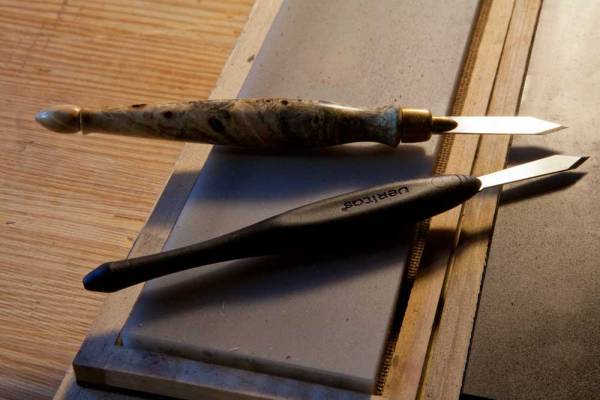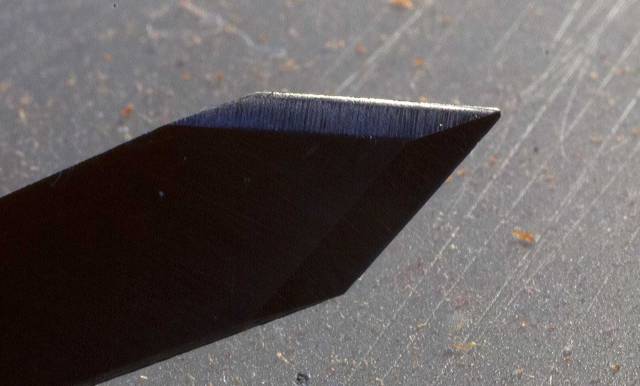
Comparing marking knives is akin to comparing wives. It is ill-advised.
But what the heck. I use a spear-point marking knife for almost everything relating to marking out handwork. I settled on this knife after using lots of knives, both bought and borrowed.
The primary reason I like it is its shape. The thin profile gets me inside joints when transferring layout. The flat back of the tool allows me to register it against my work. And if I’m attacked in the shop, it’s good for plucking out eyeballs.
The two primary criticisms of the knife are as follows.
1. It’s not traditional. Well, neither is air conditioning, but it’s a modern invention that makes Kentucky livable. While I usually prefer traditional shapes, I have compared them to this knife and prefer the spear-point. I have room in my heart for progress.
2. The spear tip becomes rounded over in use, rendering it useless until you re-sharpen. When you see this criticism you should translate it as, “Blah, blah, blah, I don’t have much experience with spear-points.” Dude, you want a rounded tip. You should desire it. You should even create it using your stones. A rounded-over tip (see below) makes the knife track better, especially when working along the grain. And it doesn’t affect its ability to make a line. It just doesn’t.

If you want to try out a spear-point knife without plopping down a sizable payment on a Blue Spruce or Czeck Edge knife, here are two recommendations: Make one from a 1/4” spade bit. I’ve done this many times on a grinder. Cost: $1.
Buy one of the new plastic-handled marking knives from Lee Valley. These are less than $10. The Lee Valley knife is the perfect thickness and shape for handwork. Its only demerit in my book is the plastic. But you cannot beat the price and it functions just as well at the bench.
— Christopher Schwarz
See the Lost Art Press statement of ethics here if you haven’t read it already.